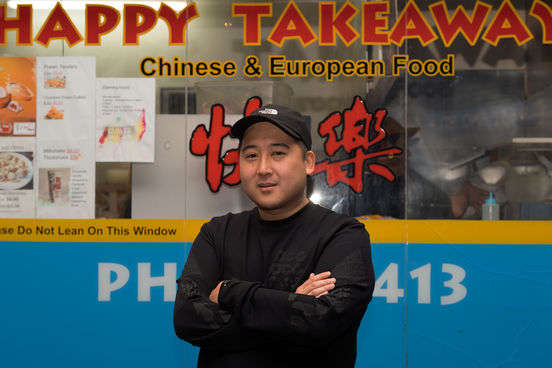Interview with Lindsay Yee
Lindsay Yee: I work as a designer. I come from Ōtautahi, with family coming from the Guangdong province in China, specifically Taishan (台山) and Guangzhou (廣州), via Oamaru and Hong Kong (香港). I currently reside in Tāmaki Makaurau and have done so since 2010.
Objectspace: The exhibition was catalysed by the idea of hostile architecture. This provocation suggests that our experience of the built environment and place can be fraught – in a state of tension that prioritises some people’s needs over others’, and at odds with the natural world. What experiences do you have of hostile architecture in your daily life? ly The urban environment of Auckland is mostly not built for a human scale, footpaths aren’t nice to walk on, crossing large roads is hard. The city is built to hide in your houses and interact with a few areas you access via driving a car individually.
OS: Tell us about your work for Toro Whakaara.
LY: My work explores ideas around immigrants filling institutions of ‘Kiwiana’ – the goods and services being accepted, but the people not. The idea that the places they create, inhabit and the culture that they bring are included as part of the wider culture, but the people are not.
OS: What’s your relationship to / connection with your chosen site?
LY: My chosen site is a fish and chip shop on Springs Road in Hornby in Christchurch. It was run by my parents from 1984 till 1993, and my uncle after that until 2005. So it is a place I’ve spent a decent amount of time in. But I also think about the other chip shops that I interact with. Living in Grey Lynn I’ve seen the closure of a couple of iconic shops. The Goodwill chip shop closed in 2019 and a vegan burger shop opened in its place. The Grey Lynn Seafood Market – famous for featuring in the Fat Freddy’s Drop music video ‘Wandering Eye’ – closed in 2020 and a vegan grocery store opened in its place. The last remaining fish and chip shop is 562 Takeaways, which I’ve visited quite a few times. It’s still serving the community well, especially late at night on weekends. Every now and then I help bridge a gap in language between the mother and son arguing in the shop. That’s definitely something I’ve dealt with previously.
OS: How does your practice of graphic design, and the multidisciplinary clients and groups it engages with, influence and define this piece?
LY: My work creating brand identities for organisations that represent Asian people meant researching connections to what represents people within the Asian diaspora, which really comes down to being categorised by external forces. This led me to travel to Tokyo for a typography and design conference, which showed me the various ways typography is keeping languages alive as well as pushing boundaries in many different technical areas. The main thing it did was prompt me to question the connection between good design and modernism. If design is taught and judged in this narrow scope, who are we excluding from our ideas of good design, and is this another branch of white supremacy? The piece for this exhibition has connections to work I did for an exhibition curated by Jia Luo and Joni Lee celebrating the Mercury Plaza before its closing. After the show I did a t-shirt design where the profits I received were donated to refugee resettlement. I also managed to do a small capsule run with local store Def.
OS: The exhibition captures fragments of the built environment and land use that often go unseen – perhaps because they are so much a part of our everyday experiences. What would you like the viewer to be seeing in your work?
LY: To think about how our spaces are used and who they are for. Who are they excluding? Was this space designed this way, and what other spaces have been designed to exclude?
This text is republished from Toro Whakaara: Responses to our built environment, a publication produced by Objectspace to accompany an exhibition of the same name. The publication is edited by Tessa Forde, and copy-edited by Anna Hodge.

Portrait of Lindsay Yee by John Rata

Lindsay Yee, Chinese Takeaways, 2021

Lindsay Yee, Chinese Takeaways, 2021